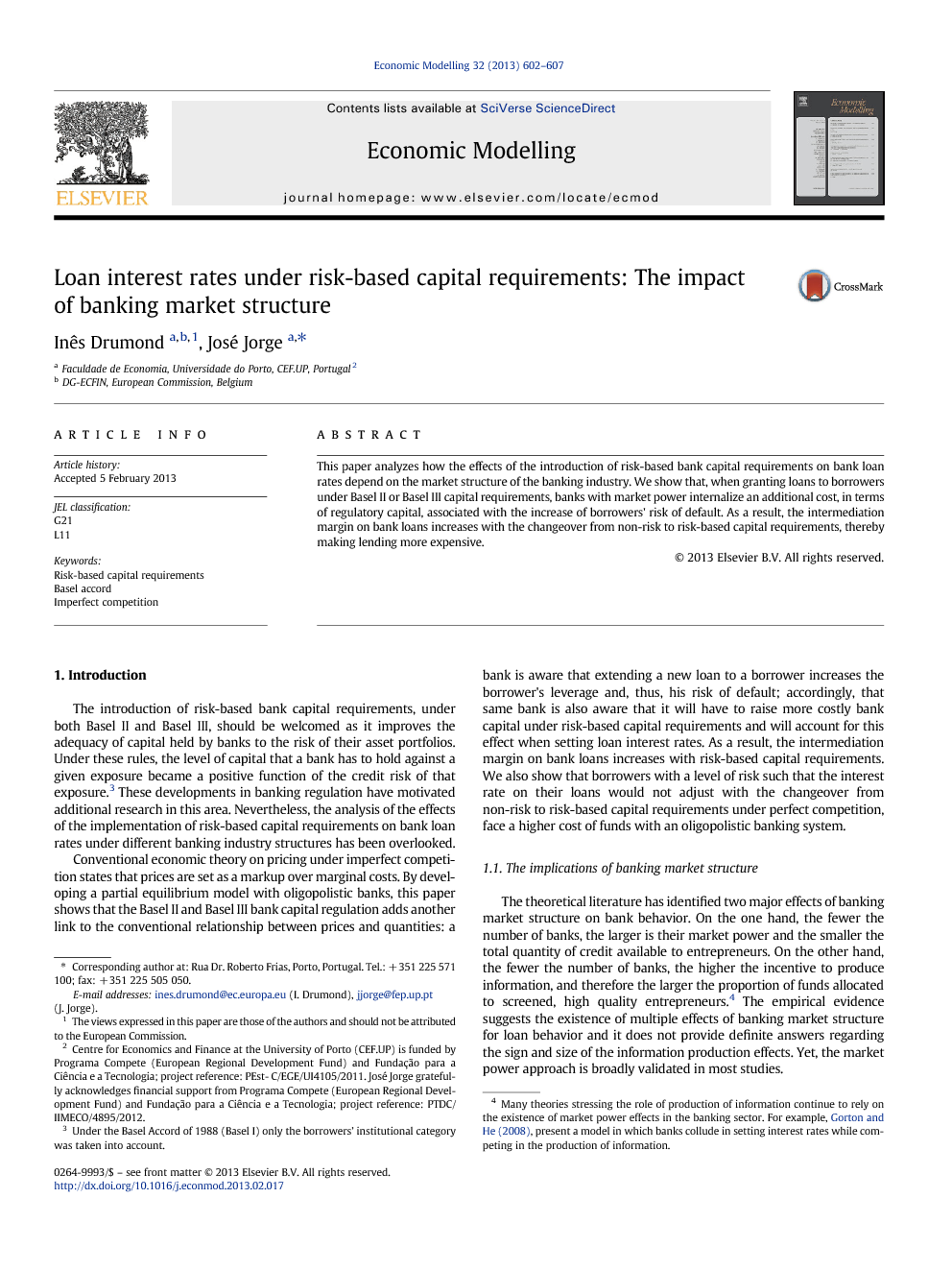ترجمه فارسی عنوان مقاله
نرخ بهره وام تحت الزامات سرمایه مبتنی بر ریسک: تاثیر ساختار بازار بانکداری
عنوان انگلیسی
Loan interest rates under risk-based capital requirements: The impact of banking market structure
| کد مقاله | سال انتشار | تعداد صفحات مقاله انگلیسی |
|---|---|---|
| 19857 | 2013 | 6 صفحه PDF |
منبع

Publisher : Elsevier - Science Direct (الزویر - ساینس دایرکت)
Journal : Economic Modelling, Volume 32, May 2013, Pages 602–607
ترجمه کلمات کلیدی
سرمایه مورد نیاز بر اساس ریسک - توافق بازل - رقابت ناقص -
کلمات کلیدی انگلیسی
Risk-based capital requirements, Basel accord, Imperfect competition,

